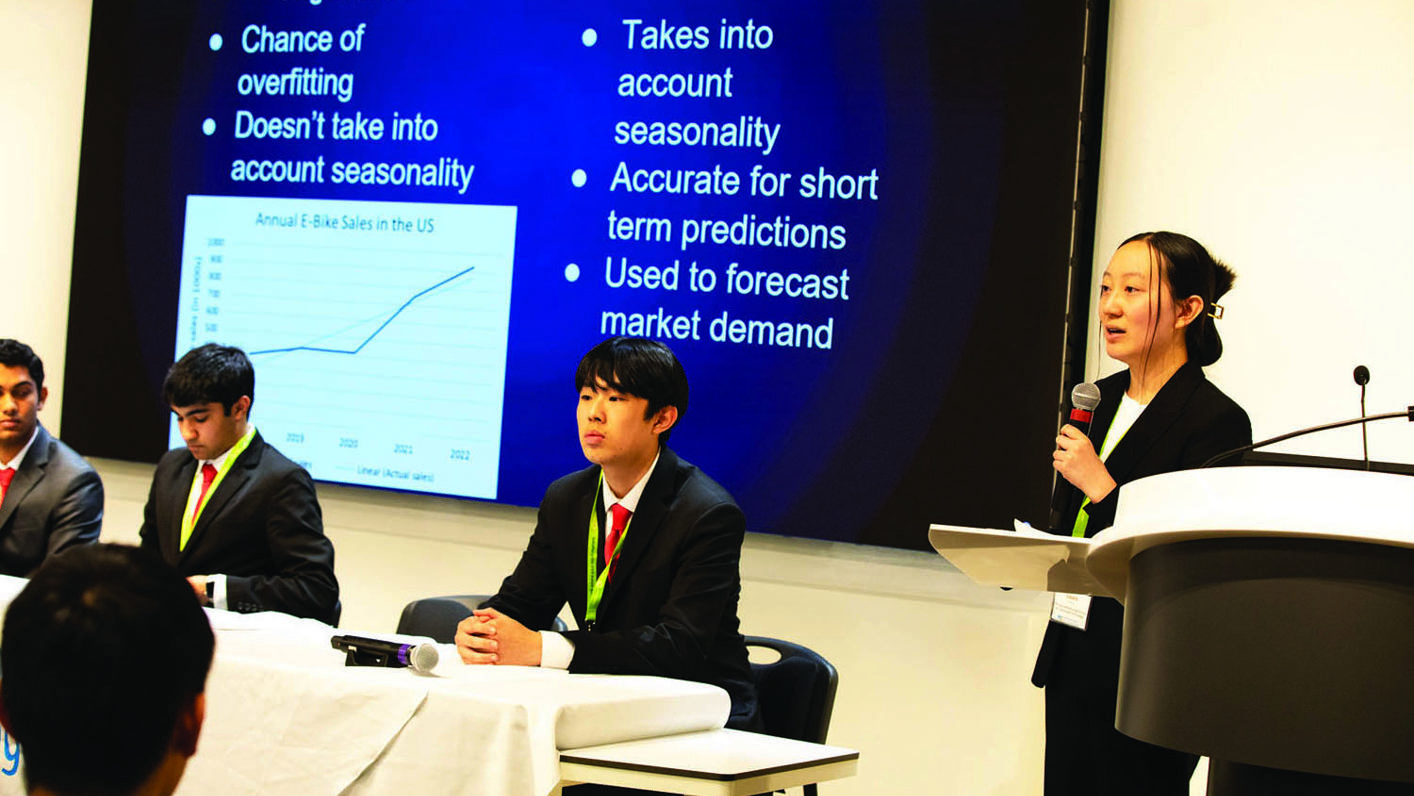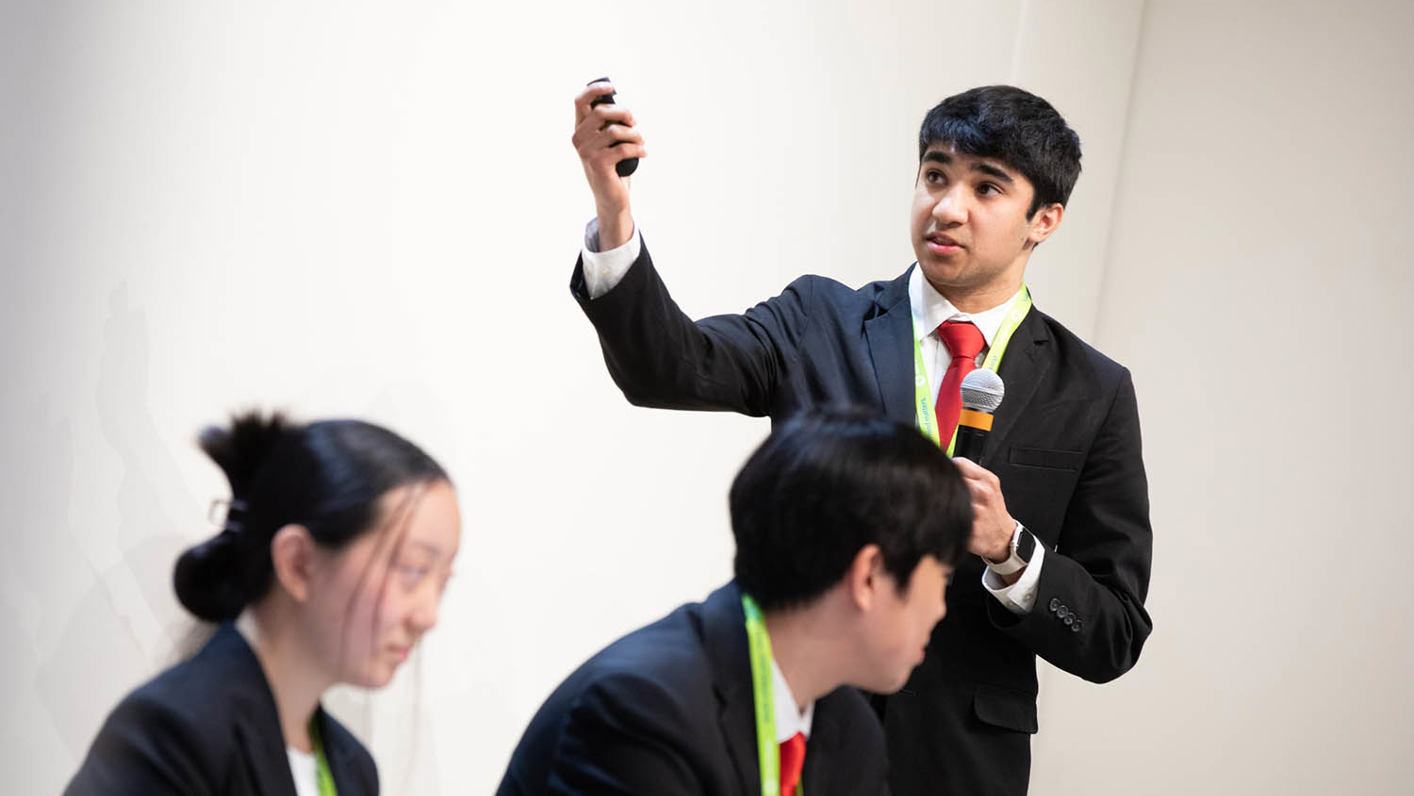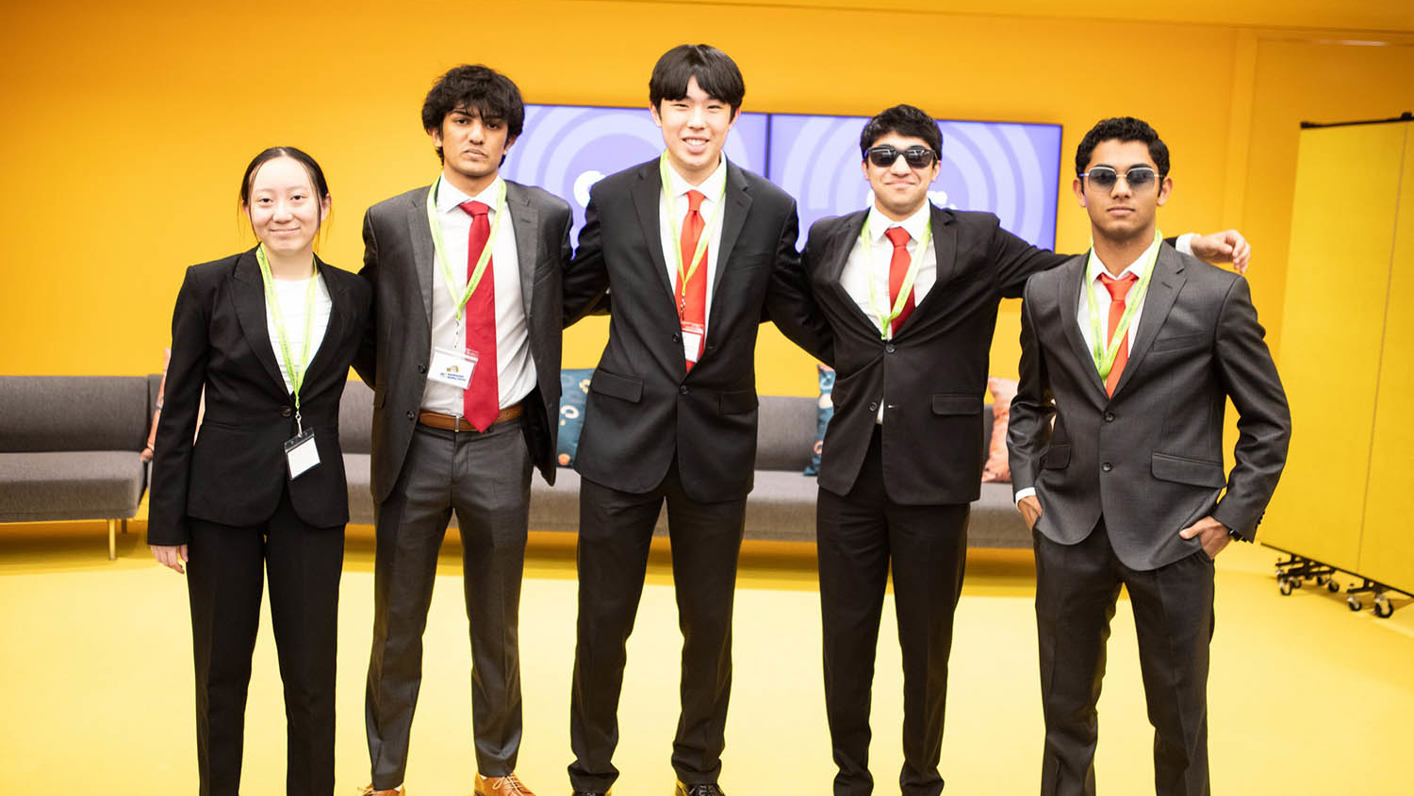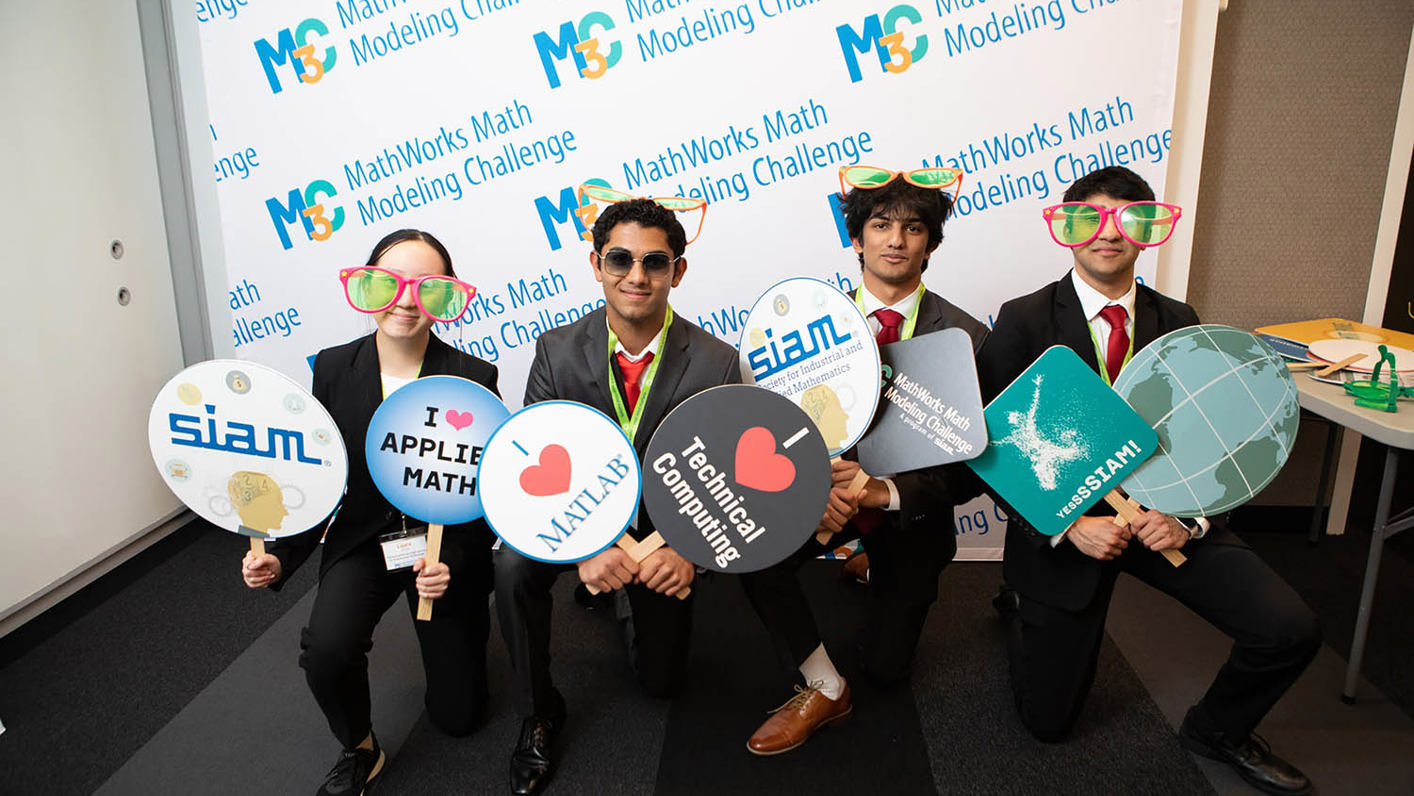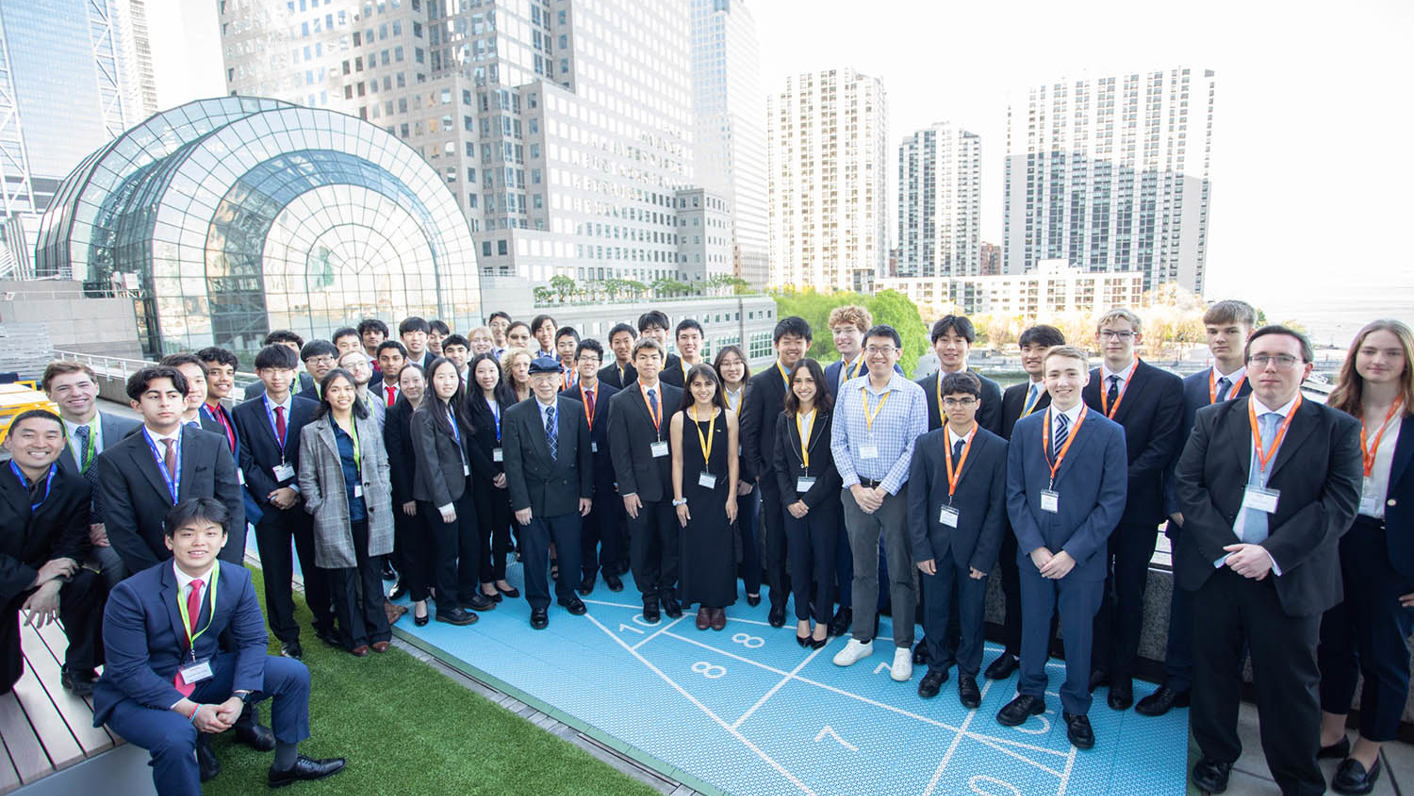Virginia High School Students Distinguished for Top-notch Model of Electric Biking Habits
Despite the rising popularity of electric cars, electric bicycles (e-bikes) are currently the most in-demand electric vehicle on the U.S. market. In fact, the Light Electric Vehicle Association estimated a 70 percent increase in annual U.S. e-bike sales in 2021 — from 463,000 to 790,000 imports. The rising prevalence of e-bikes likely stems from a variety of factors, including affordability; health and environmental benefits; and the chance to avoid the hassle of public transit, parking, and automobile traffic. Many urban businesses have even turned to e-bikes for the delivery of food, groceries, and other merchandise.
“New Yorkers have absolutely embraced e-bikes,” Carl Sundstrom, Director of Planning Policy and Innovation at the New York City Department of Transportation (NYC DOT), said. “These devices fit into the city for all the right reasons — they’re efficient, small, easy to park, and can carry all sorts of things, from take-out orders and packages to children. NYC DOT is committed to addressing the new opportunities and challenges of the growth of e-bikes by taking their infrastructure and charging needs into account to build a safer, more efficient, and more sustainable city.”
Given the recent surge in e-bike popularity and its potential impact on sustainable energy policies, the 2023 MathWorks Math Modeling Challenge (M3 Challenge) focused on the growth of e-bike use. M3 Challenge, a program of SIAM with MathWorks as its title sponsor, is an annual mathematical modeling competition for U.S. high school juniors and seniors and sixth form students in England and Wales. Participating teams of three to five students have 14 consecutive hours to tackle a multifaceted, real-world problem with mathematical modeling techniques and produce a 20-page report that explains and defends their solutions. More than 120 Ph.D.-level applied mathematicians then evaluate all submitted papers during multiple rounds of blind judging and select the top contenders. In late April, the 2023 finalist teams traveled to New York City and presented their solutions to a live panel of judges at Jane Street—a quantitative trading firm—to compete for over $100,000 in scholarship funds.
The 2023 Challenge problem was written by both Chris Musco of New York University—a 2008 M3 Challenge winning alumnus and M3 Challenge Director of Technical Computing Judging—and Neil Nicholson of the University of Notre Dame, with input from the M3 Challenge Problem Development Committee. The three-part question asked students to forecast future e-bike sales, explain the contributing factors, and predict the resulting implications. “The Problem Development Committee was interested in learning more about the potential impacts of this technology,” Musco said. “There has not been much in-depth analysis of the growth of e-bike usage, its cause, and whether it will continue. The ‘unknown’ nature of this topic makes e-bikes a strong subject for math modeling and provided an opportunity for students to conduct analysis that was truly new.”
The first part of the problem asked teams to create a model that predicts the number of e-bikes that will be sold in 2025 and 2028. They then had to choose one or more factors that might have contributed to recent e-bike popularity—such as environmental awareness, gas prices, personal finance, health and exercise, and/or trendiness—and utilize mathematical modeling to determine whether their selected factors did indeed influence the uptick in e-bike use. Finally, teams quantified the resulting impact of e-bike usage on conditions like carbon emissions, traffic congestion, and general health and wellness.
Members of the first-place team from Thomas Jefferson High School for Science and Technology in Alexandria, Va., were excited by this year’s problem topic. “I’ve used e-bikes before, but I didn’t think much of them until I saw their utility through this competition,” Rishabh Chhabra said. “When I was younger, one of my neighborhood friends had an electric bike and I got to try it a few times. What I didn’t realize, though, is how useful e-bikes can be for long-distance travel or commutes to work.” In addition to Chhabra, the Thomas Jefferson team consisted of Om Gole, Rishabh Prabhu, Jerry Sheng, and Laura Zhang.
The group opted for an autoregressive integrated moving average (ARIMA) model to predict the number of U.S. e-bike sales in the next two and five years. “We decided to use an ARIMA model because we wanted to account for the seasonality of monthly e-bike sales, which standard linear and exponential regression don’t do,” Zhang said. “The ARIMA model is also often used in economics to predict market demand, which fits well with predicting e-bike sales.” Since they lacked substantial historic data, the students created an adjustable multiplier for previous years by assuming a ratio between e-bike and plug-in hybrid electric vehicle sales. They then employed a time series to extrapolate monthly e-bike sales from 2018 to 2030. Their model ultimately predicted 1.409 million annual e-bike sales in 2025 and 1.912 million annual e-bike sales in 2028.
Next, the Thomas Jefferson team chose four factors as potential contributors to e-bike popularity: gas prices, median disposable income, transportation distance (measured via monthly vehicle miles), and environmental awareness. The students represented every factor as a time series and relied on the Granger causality test—which measures one time series’ ability to predict another—to determine each one’s individual significance. “The Granger causality test demonstrates predictive causality and can stagger data to check for delayed effects, which is called lag,” Gole said. Using the statsmodels Python library, Gole and his peers executed their model on time series data of monthly e-bikes sales from January 2018 to December 2022. “Our algorithm cleaned the data; ran the Granger causality test; generated F-statistics at lags of one, three, and 12 months; conducted F-tests; and logged p-values,” he continued. “It then conducted a significance test on the p-values and highlighted significant results.”
The group found that gas prices and environmental awareness can predict a variance in e-bike sales with a one-month lag, meaning that these factors impact sales after only one month. Median disposable income has no substantial influence, and transportation distance can predict variance with a 12-month lag and therefore only impacts e-bikes sales in the long run after one year.
Finally, the students utilized a Markov chain model to quantify the effects of growing e-bike usage on carbon emissions, traffic congestion, and exercise. Specifically, they created a migration matrix to predict the number of people who will use gas cars, electric cars, public transportation, electric bikes, and regular bikes in two and five years. “The standard way of modeling changes in population distribution is via a Markov chain analysis, which primarily consists of matrix algebra,” Prabhu said. “Therefore, it made sense to have a matrix method that calculates the impact score, which we implemented by creating a relative effect weighting matrix with relative values to show the impact of a transport mode on each factor.” The team determined that carbon emissions will decrease by 3.85 percent in two years and 9.52 percent in five years, traffic congestion will decrease by 0.64 percent in two years and 1.60 percent in five years, and exercise will increase by 0.09 percent in two years and 1.60 percent in five years.
The Thomas Jefferson team, which was coached by mathematics and computer science teacher Quinn McFee, took home $20,000 in scholarship money for their first-place solution paper. They also received one of three Technical Computing Awards for their impressive use of coding and programming, as well as the Outstanding Communication of Results prize for their extraordinary presentation; these two additional accolades collectively earned them an extra $2,500.
2023 marks only the second time that Thomas Jefferson students have participated in M3 Challenge in the recent past; last year, the school received an Honorable Mention after Sheng—an officer of the Math Modeling Club—encouraged his fellow club members to participate. The group then spent the next year preparing for the 2023 Challenge by practicing outside of the classroom and reviewing the winning papers of previous competitors.
“While math education demonstrates many different approaches to the same solution, using math to understand an imperfect or incomplete system engages a very different kind of critical thinking,” McFee said. “Students not only had to apply what they know about statistics and programming, but also account for authentic constraints such as lack of data, make predictions with incomplete information, and develop a robust but accessible argument to answer a question that can only be validated by other researchers and time. It is difficult to recreate this experience in the classroom; in that regard, the contest is a meaningful learning experience for aspiring mathematicians.”
This is precisely the goal of M3 Challenge, which is now in its 18th year. The Challenge has grown significantly since its first iteration in 2006, which was only open to students in the New York City metro area. 129 teams submitted viable solutions during that initial year; in contrast, 650 teams participated in 2023. Michelle Montgomery—who helped to develop the contest—has served as the competition’s leader and organizer since its onset. She is retiring from her current role as M3 Project Director and was honored during the 2023 Final Event in New York City.
“M3 Challenge is special for so many reasons, and working on this program feels more like a really fun hobby than a job sometimes,” Montgomery said. “It is so gratifying to facilitate all of these transformational moving parts. The math modeling process is a fun and interesting team-based activity that can lead to amazing careers doing meaningful things. The teams intermingle and exchange contact information at the Final Event, and I often think that these are some of tomorrow’s world changers — there’s no doubt about it.”
Prabhu, who intends to pursue a career in applied mathematics, acknowledged that M3 Challenge has helped to shape his long-term plans and overall perspective of mathematical modeling. “Applied mathematics is used in almost every computational analysis that runs the modern world,” he said. “It is an incredibly crucial and fundamental skill for numerous professions, but the core mathematical models that serve as the foundations for many machine learning and data science algorithms are not understood by most of their beneficiaries. I want to create and improve these fundamental models, as they can have profound impacts on various fields that use applied mathematics.”
As the Thomas Jefferson students look toward the future, they expressed gratitude for M3 Challenge and encouraged future competitors to embrace creativity, experiment with new techniques, and participate in the Challenge — even if they are not familiar with mathematical modeling. “Before this year, I had no experience with modeling,” Zhang said. “This was the first time that I experienced the power of math in real-world situations. My biggest takeaway from M3 Challenge is that math is everywhere and can be used to model actual phenomena. I now have a much better grasp of different mathematical models and the situations in which to use each of them.”
Thomas Jefferson High School for Science and Technology’s winning solution paper is available online, as is their final presentation.
About the Author
Lina Sorg
Managing editor, SIAM News
Lina Sorg is the managing editor of SIAM News.

Stay Up-to-Date with Email Alerts
Sign up for our monthly newsletter and emails about other topics of your choosing.





